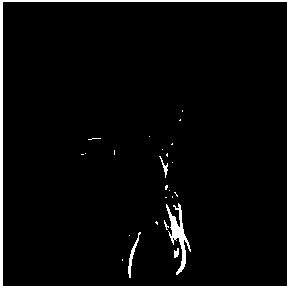Cryptomeria fortunei clone in-vitro rooting culture method
A technology for rooting culture and clones, applied in the field of plant rooting culture, can solve problems such as low seed germination rate, and achieve the effect of meeting the needs of industrial use and good practicability
- Summary
- Abstract
- Description
- Claims
- Application Information
AI Technical Summary
Problems solved by technology
Method used
Image
Examples
Embodiment 1
[0024] 1) Sterilization and bottle fixing of sprouts
[0025] Cut out the young and young shoots of the fine cedar cedar clone 011#, remove the excess leaves, soak in detergent diluted with deionized water for 30 minutes, and then rinse with running water for 1 hour. Under sterile conditions, soak in 70% alcohol for 90s, then treat with 0.1% mercuric chloride for 10 minutes, and then rinse with sterile water for 3-4 times, each time for 1-2 minutes. During the sterilization process of the medicinal solution, gently shake the triangular flask so that the sterilization solution fully contacts the explants. After rinsing, place it in a petri dish, and after the sterile filter paper absorbs the residual water, cut off the injured parts at both ends of the stem to reduce the poison of mercury liter. Then it was cut into 2-3cm long stem segments, inoculated on sterilized MS medium, and cultured for 2 weeks.
[0026] 2) Differentiation and elongation of buds
[0027] Put the tissu...
Embodiment 2
[0046] 1) Sterilization and bottle fixing of sprouts
[0047] Cut off young and young shoots of the fine cedar cedar clone 3# in the same year, remove excess leaves, soak in detergent diluted with deionized water for 30 minutes, and then rinse with running water for 1 hour. Under sterile conditions, soak in 70% alcohol for 90s, then treat with 0.1% mercuric chloride for 10 minutes, and then rinse with sterile water for 3-4 times, each time for 1-2 minutes. During the sterilization process of the medicinal solution, gently shake the triangular flask so that the sterilization solution fully contacts the explants. After rinsing, place it in a petri dish, and after the sterile filter paper absorbs the residual water, cut off the injured parts at both ends of the stem to reduce the poison of mercury liter. Then it was cut into 2-3cm long stem segments, inoculated on sterilized MS medium, and cultured for 2 weeks.
[0048] 2) Differentiation and elongation of buds
[0049] Put th...
Embodiment 3
[0066] 1) Sterilization and bottle fixing of sprouts
[0067] Cut out young and young shoots of the fine cedar cedar clone 70#, remove excess leaves, soak in detergent diluted with deionized water for 30 minutes, and then rinse with running water for 1 hour. Under sterile conditions, soak in 70% alcohol for 90s, then treat with 0.1% mercuric chloride for 10 minutes, and then rinse with sterile water for 3-4 times, each time for 1-2 minutes. During the sterilization process of the medicinal solution, gently shake the triangular flask so that the sterilization solution fully contacts the explants. After rinsing, place it in a petri dish, and after the sterile filter paper absorbs the residual water, cut off the injured parts at both ends of the stem to reduce the poison of mercury liter. Then it was cut into 2-3cm long stem segments, inoculated on sterilized MS medium, and cultured for 2 weeks.
[0068] 2) Differentiation and elongation of buds
[0069] Put the tissue materia...
PUM
 Login to View More
Login to View More Abstract
Description
Claims
Application Information
 Login to View More
Login to View More - R&D
- Intellectual Property
- Life Sciences
- Materials
- Tech Scout
- Unparalleled Data Quality
- Higher Quality Content
- 60% Fewer Hallucinations
Browse by: Latest US Patents, China's latest patents, Technical Efficacy Thesaurus, Application Domain, Technology Topic, Popular Technical Reports.
© 2025 PatSnap. All rights reserved.Legal|Privacy policy|Modern Slavery Act Transparency Statement|Sitemap|About US| Contact US: help@patsnap.com



